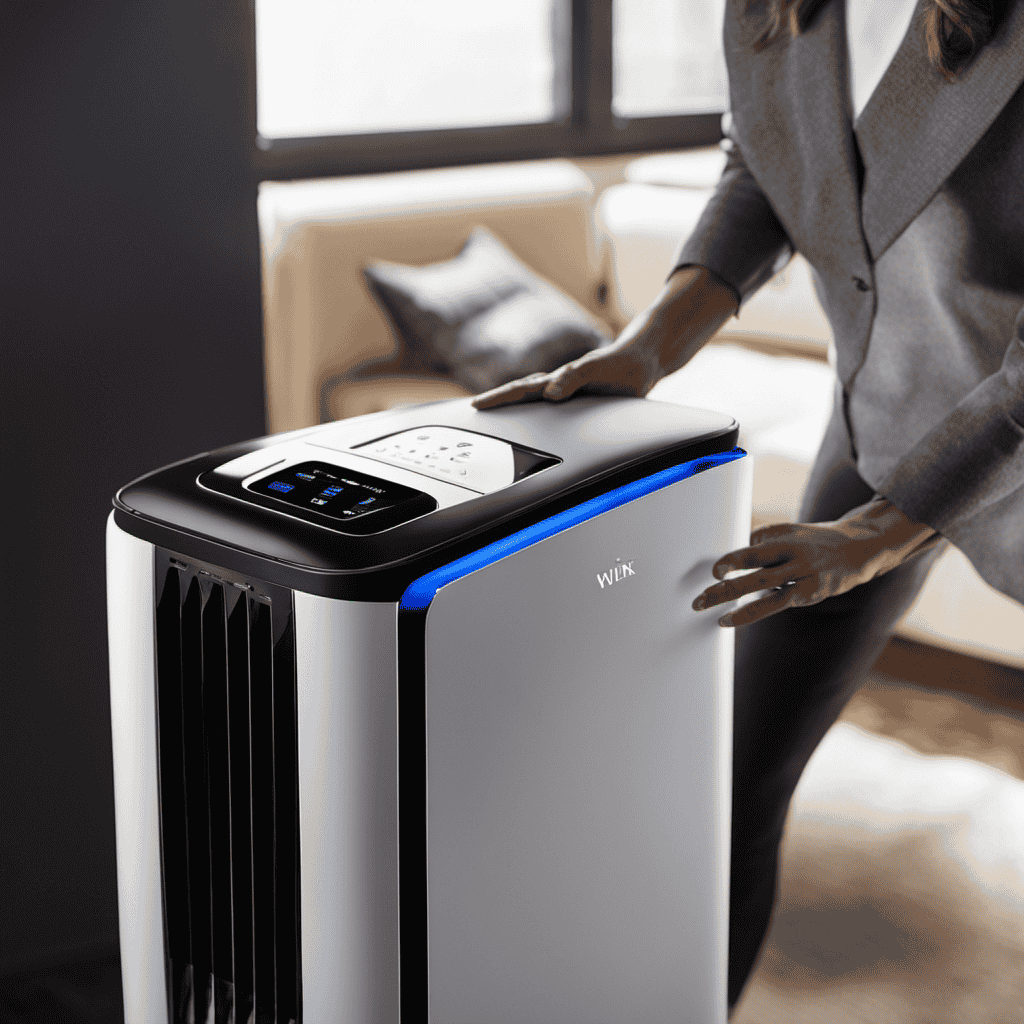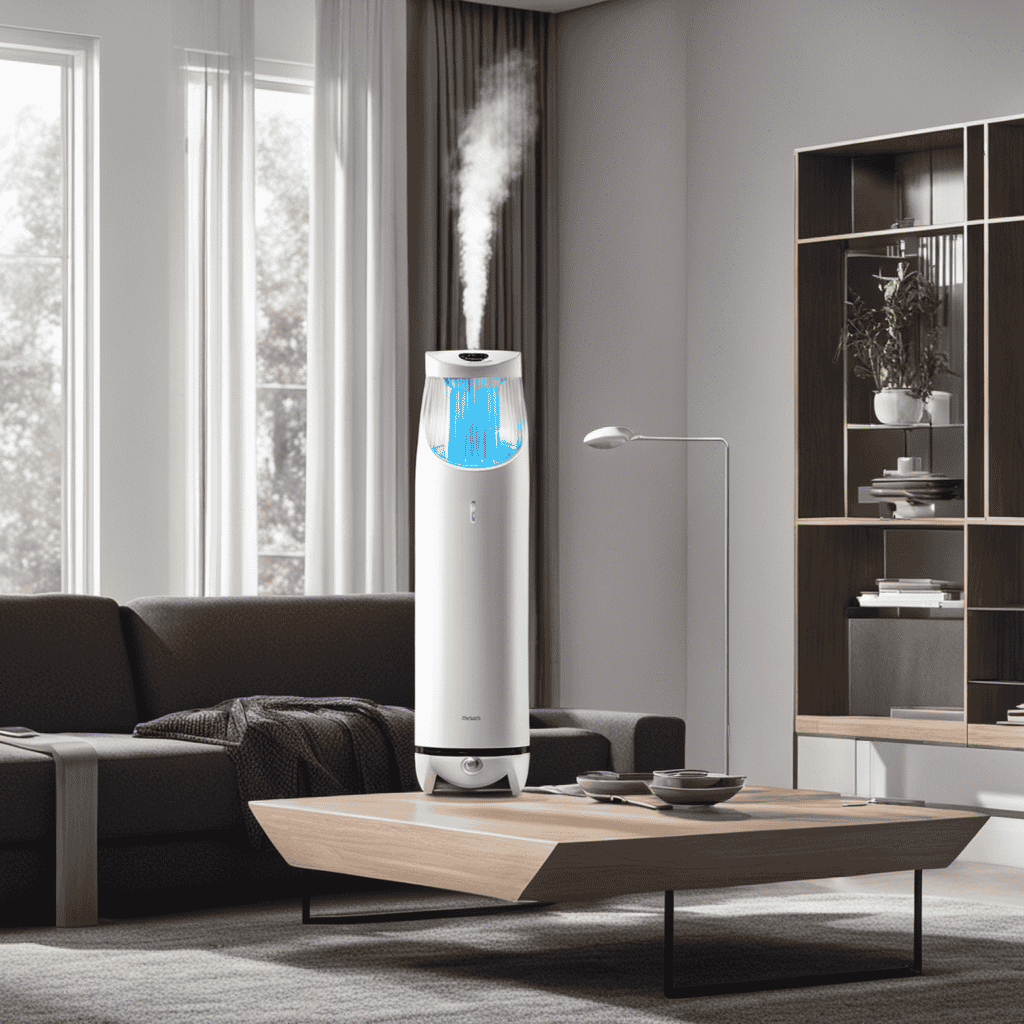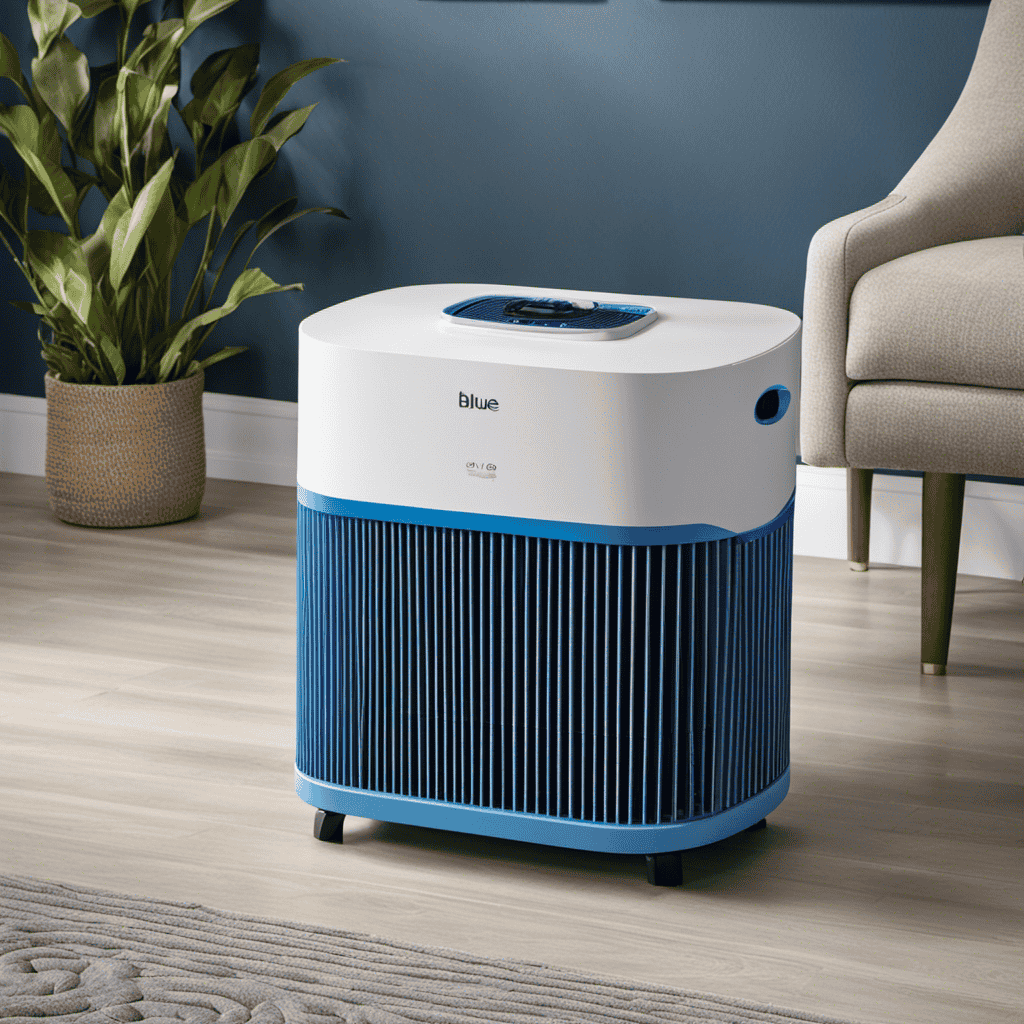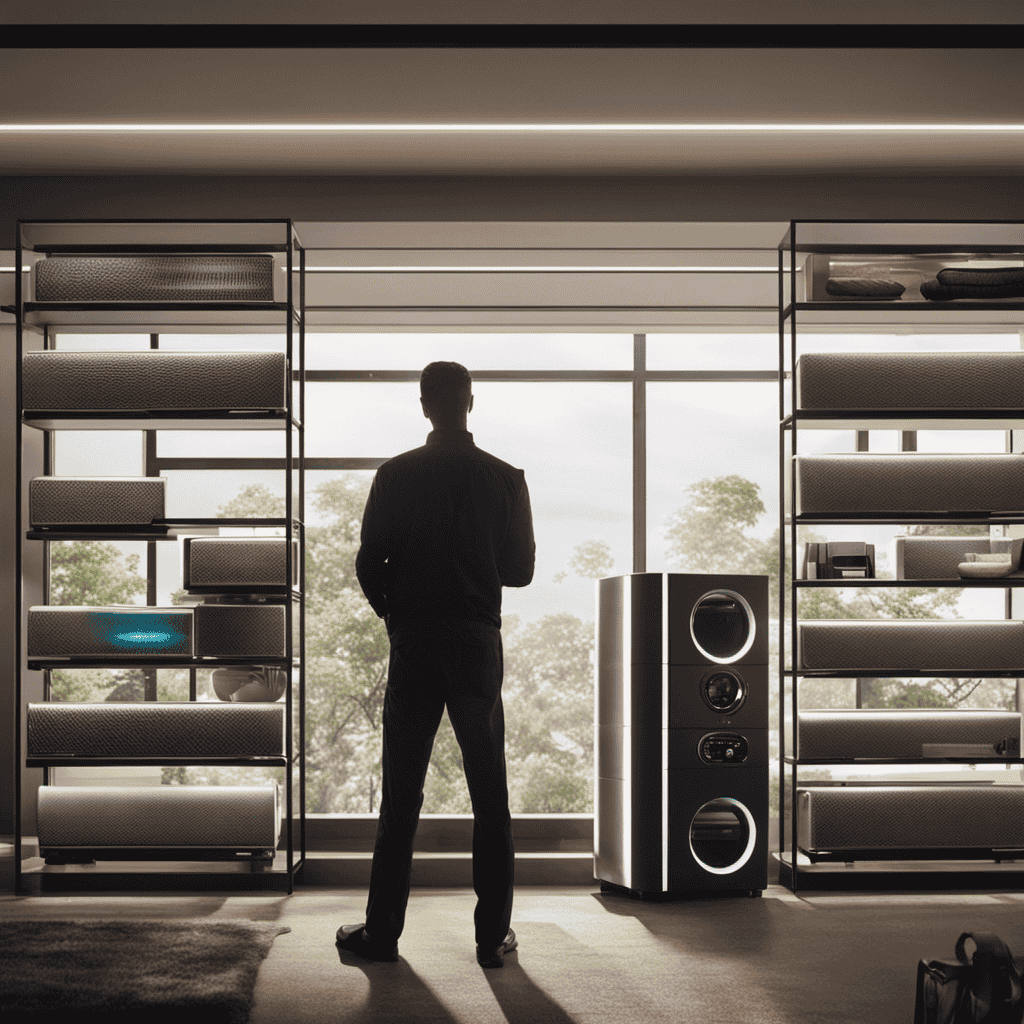I’ve always had worries regarding the air quality inside my house, so I took the initiative to craft my own air purifier.
In this article, I will guide you through the process of selecting the right components, assembling the machine, setting up the wiring and circuitry, testing and troubleshooting, as well as proper maintenance and upkeep.
By the end, you’ll have a detailed understanding of how to create an effective air purifier that will leave your home feeling fresh and clean.
Key Takeaways
- HEPA filters and activated carbon filters are essential components of an air purifier, with the former capturing microscopic particles and the latter removing odors, gases, and chemicals.
- Understanding airflow dynamics and considering the size of the room and required air changes per hour (ACH) are crucial factors when building an air purifier.
- Proper assembly of the air purifier includes inserting the filter, attaching the fan, and securing the housing, while following safety precautions.
- Wiring and circuitry setup should be done carefully, following circuit diagrams and guidelines to ensure correct connections and prevent malfunctions or safety hazards.
Selecting the Right Components
When building an air purifier machine, it’s important to start by selecting the right components. Choosing the right filters is crucial for effective air purification. HEPA (High-Efficiency Particulate Air) filters are highly recommended due to their ability to trap microscopic particles like dust, pollen, and pet dander. They have a high capture rate of 99.97%, ensuring cleaner air.
Activated carbon filters are also essential as they can remove odors, gases, and chemicals from the air. Understanding airflow dynamics is equally important. A well-designed air purifier should have a balanced airflow, with an intake fan that draws in polluted air and an exhaust fan that expels clean air.
It’s crucial to consider the size of the room and the air changes per hour (ACH) required for effective purification. By carefully selecting the right filters and understanding airflow dynamics, you can build an efficient air purifier machine.
Assembling the Air Purifier Machine
To begin assembling your air purifier, you’ll need to gather all the necessary components and arrange them in order of assembly. Here is a table outlining the components and their respective assembly techniques:
| Component | Assembly Technique |
|---|---|
| Filter | Insert the filter into the designated slot |
| Fan | Attach the fan to the base of the purifier |
| Housing | Secure the housing around the filter and fan |
When assembling your air purifier, it is important to follow certain safety precautions. Always ensure that the power is disconnected before beginning assembly. Additionally, make sure to handle any sharp or delicate components with care to avoid injury or damage. It is also recommended to wear protective gloves and safety glasses during assembly to minimize any potential hazards.
With the components assembled, we can now move on to the next step: wiring and circuitry setup.
Wiring and Circuitry Setup
Once you have gathered all the necessary components for the air purifier, it’s time to start wiring and setting up the circuitry.
Circuit design plays a crucial role in ensuring the efficient functioning of the air purifier. Before starting, make sure to carefully read the circuit diagram provided with the components.
Begin by connecting the power source to the main control board. Use appropriate wires and connectors for the electrical connections. It is essential to double-check the polarity and ensure that all the connections are secure and tight.
Additionally, follow the guidelines for connecting the fan motor, filters, and sensors to the circuit. Take your time to ensure that each connection is made correctly to avoid any potential malfunctions or safety hazards.
Testing and Troubleshooting
Before proceeding with the final assembly, it’s important to test each component of the circuitry to identify and troubleshoot any potential issues. Here are four troubleshooting techniques to help you address common issues:
-
Check for loose connections: Ensure that all wires and cables are securely connected. Loose connections can cause intermittent or no power flow, resulting in malfunctioning components.
-
Test voltage levels: Use a multimeter to measure the voltage at different points in the circuit. Comparing the measured values with the expected values will help identify any voltage irregularities that may be causing issues.
-
Inspect for damaged components: Look for signs of physical damage, such as burnt or swollen components. These can indicate a faulty component that needs to be replaced.
-
Use a process of elimination: Disconnect one component at a time and test the circuit to isolate the problematic component. This approach helps identify the specific component causing the issue.
Maintenance and Upkeep
To keep your air purifier running smoothly, make sure to regularly clean or replace the filters to maintain optimal performance. Cleaning the filters is a crucial step in maintaining the efficiency of your air purifier. Over time, dust and other particles accumulate on the filters, reducing their effectiveness in capturing pollutants from the air.
To clean the filters, gently remove them from the air purifier and rinse them under running water. Allow them to air dry completely before reinserting them. However, if the filters are heavily soiled or damaged, it is recommended to replace them with new ones.
Replacing parts, such as filters, is essential to ensure that your air purifier continues to provide clean and fresh air in your indoor environment.
Frequently Asked Questions
How Often Should the Air Filters Be Replaced in an Air Purifier Machine?
Air filters in an air purifier machine should be replaced regularly to maintain optimal performance and clean air quality. The lifespan and replacement frequency of air filters depend on factors such as usage, indoor air quality, and the specific model of the air purifier.
Can an Air Purifier Machine Remove All Types of Indoor Pollutants, Including Viruses and Bacteria?
Yes, an air purifier machine can remove various indoor pollutants, including viruses and bacteria. This is one of the benefits of using an air purifier machine for allergies and improving indoor air quality.
Are There Any Safety Precautions to Consider When Assembling the Air Purifier Machine?
Safety precautions and important considerations are crucial when assembling an air purifier machine. It is essential to follow the manufacturer’s instructions, wear protective gear, and be mindful of electrical connections to ensure a safe and effective build.
How Long Does It Typically Take to Complete the Wiring and Circuitry Setup of an Air Purifier Machine?
Setting up the wiring and circuitry of an air purifier machine typically takes a few hours. It requires careful planning, precise connections, and attention to detail. Ensuring proper insulation and grounding is crucial for safety and optimal functionality.
What Are Some Common Issues That May Arise During the Testing and Troubleshooting Phase of Building an Air Purifier Machine?
During the testing and troubleshooting phase, common malfunctions in an air purifier machine may include faulty sensors, motor issues, or clogged filters. Troubleshooting tips can help identify and resolve these issues efficiently.
Conclusion
In conclusion, building an air purifier machine requires careful selection of components, precise assembly, meticulous wiring and circuitry setup, thorough testing, and regular maintenance.
By following these steps, one can create a device that efficiently cleans the air and improves the overall indoor air quality. However, it is important to remember that building an air purifier machine is not a walk in the park.
It requires dedication, attention to detail, and perseverance. As the saying goes, ‘Rome wasn’t built in a day’, and neither is a high-quality air purifier machine.










